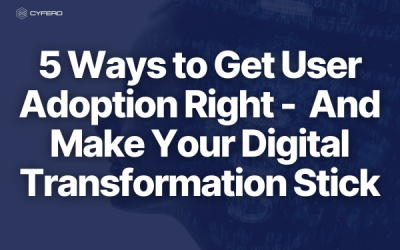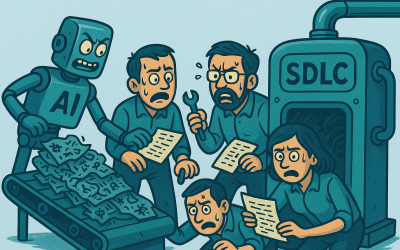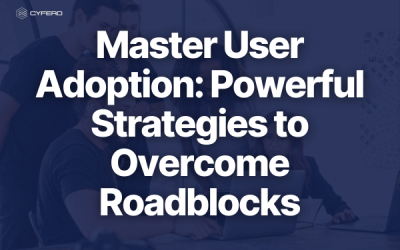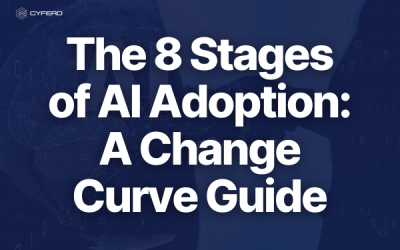The Overlooked Patient Safety Threat: Consequences of Data Silos in Healthcare
Patient safety is paramount in healthcare, and the seamless flow of patient information across healthcare providers, hospitals, and general practitioners (GPs) plays a pivotal role in ensuring that patients receive the right care at the right time. Many healthcare systems struggle with information silos and the risk of misdiagnosing patients due to incomplete or fragmented medical records. This can also lead to delays in getting a diagnosis or treatment.
In July 2021, the National Health Service (NHS) took a significant step forward in enhancing patient safety by launching the new NHS Learn from Patient Safety Events (LFPSE) service. This state-of-the-art system replaces the outdated National Reporting and Learning System (NRLS) and Strategic Executive Information System (StEIS), addressing the need for more efficient patient safety event recording and analysis. These outdated systems were difficult to use and did not allow for the collection of all the data that is needed to learn from patient safety events.
Data silos can occur when information is trapped within specific departments, healthcare institutions, or individual electronic health record (EHR) systems. This fragmentation of patient data can be especially problematic in busy wards with shift work, as it can mean that healthcare professionals are unable to provide continuity of care without access to a comprehensive patient history. This lack of holistic patient information can result in missed diagnoses, incorrect treatments, and unintended patient harm.
Accidental misdiagnoses and missed patient information are not uncommon in healthcare, and they can have severe consequences. Several factors contribute to these issues, including:
Incomplete Patient Profiles: When healthcare providers do not have access to a patient’s complete medical history, they are more likely to overlook critical details that could influence diagnosis and treatment decisions.
Communication Gaps: Communication gaps between different healthcare entities, such as hospitals, clinics, and GPs, as well as between shifts, nurses, doctors, and consultants, can lead to crucial patient information not being transferred or updated.
Human Error: Healthcare professionals, like any other individuals, can make mistakes. The pressure of managing complex patient information manually increases the likelihood of these errors.
Diagnostic Challenges: Some medical conditions present with vague or overlapping symptoms, making accurate diagnosis even more challenging. Access to comprehensive patient data becomes paramount in such cases.
The ramifications of this issue are stark, as statistics from April 2021 to March 2022 reported by the NHS reveal a staggering 102,059 patient safety incidents derived from documentation issues, including electronic and paper records, identification, and drug charts. This category highlights a critical problem within the healthcare system.
Within this category, incidents are divided into five distinct categories, each with its own level of harm:
No Harm: A situation where no harm occurred, either because a patient safety incident was prevented, or no harm incident was involved. This category affected 93,847 individuals.
Low Harm: These incidents, causing minimal harm and requiring extra observation or minor treatment, affected 7,877 individuals.
Moderate Harm: A more serious category, impacting 274 individuals, where incidents resulted in further treatment, possible surgical intervention, treatment cancellation, or transfer to another area, causing short-term harm.
Severe Harm: This category, affecting 49 individuals, denotes incidents causing permanent or long-term harm.
Death: The most devastating of all, with 12 individuals affected, denotes incidents leading to the unfortunate and unexpected loss of life.
While most documentation errors do not cause serious harm, they can still have a significant impact on patients’ lives. Even a minor error can lead to unnecessary worry, inconvenience, and additional medical procedures.
This is a stark reminder that the consequences of data silos and outdated, decentralized patient files go beyond administrative inconveniences. They lead to real-world harm, from minor inconveniences to severe consequences and, most tragically, the loss of life. The need for immediate action in streamlining and centralizing patient information cannot be overstated.
Artificial intelligence (AI) and digital transformation are revolutionizing healthcare by addressing the challenges of data silos, misdiagnosis, and missed patient information. Integrating AI into healthcare complements the experience and wealth of knowledge of doctors and nurses, empowering them to reach their full potential by reducing obstacles and providing data-driven insights. Some ways AI can transform healthcare include:
1. Data Integration: AI-driven solutions and digital platforms can integrate patient data from various sources, creating a unified patient profile accessible to authorized healthcare professionals. This ensures that all relevant information is available at the point of care, reducing the risk of misdiagnosis.
2. Predictive Analytics: AI-powered predictive analytics can identify potential health risks and recommend preventive measures, allowing healthcare providers to act proactively rather than reactively.
3. Decision Support Systems: AI-driven decision support systems help healthcare professionals by offering evidence-based recommendations, thus minimizing the risk of making errors in diagnosis and treatment.
4. Telemedicine: Digital transformation has enabled telemedicine, allowing remote consultation and data sharing between patients and healthcare providers, ensuring that no critical information is missed even in virtual visits.
5. Automated Alerts and Reminders: AI can generate automated alerts and reminders for follow-up appointments, medication schedules, and critical patient information updates, reducing the risk of oversight.
The integration of AI and digital transformation into healthcare not only enhances patient safety but also improves the morale of healthcare professionals. By minimizing the risk of misdiagnosis and treatment errors, healthcare institutions can reduce legal liabilities and malpractice claims, boosting staff morale. Automation of administrative tasks and streamlined data access leads to more efficient workflows for healthcare providers, reducing stress and burnout. AI and digital tools promote better collaboration between healthcare providers, resulting in improved care coordination and job satisfaction. The focus on comprehensive patient profiles and evidence-based decision support allows healthcare providers to deliver more patient-centric care, which can be personally rewarding.
Enter Cyferd, a revolutionary digital transformation platform in healthcare. The platform employs AI to harness insights from patient data scattered across medical records, lab results, and reports. Cyferd’s AI-driven capabilities provide a holistic understanding of each patient, allowing healthcare providers to deliver high-quality care.
Cyferd’s impact on patient safety is threefold:
Identifying Potential Risks: Cyferd’s AI capabilities can predict risks by analyzing historical patient data. It can help medical professionals identify patients at risk of certain diseases or adverse reactions to medications based on their medical history, reducing the chances of misdiagnoses.
Enhancing Communication: By integrating data from diverse sources, Cyferd facilitates seamless communication among healthcare providers. This comprehensive patient data ensures that all team members are fully informed about each patient’s health history and condition, mitigating the risk of missing critical information during treatment.
Improving Hospital Morale: Cyferd reduces the risk of errors and enhances communication. This, in turn, allows healthcare providers to focus on providing the best possible care to their patients, leading to a more positive and productive work environment and boosting morale among healthcare staff.
Patient safety is a cornerstone of healthcare, and overcoming data integration challenges and addressing the risk of misdiagnosis is critical. AI and digital transformation are ushering in an era of improved patient safety, streamlined workflows, and increased morale among healthcare professionals.
The healthcare industry is on the brink of transformation thanks to Cyferd and similar innovative solutions. By addressing data silos and implementing AI, healthcare providers can not only elevate patient safety but also streamline communication and elevate morale. This transformation ensures a safer, more efficient, and more gratifying experience for both patients and providers.
5 Ways to Get User Adoption Right
AI Can Code. But Can It Ship? The Challenges of AI Code Generation
Fix the Flow: How to Unblock Broken Business Processes Fast
How to Be a Digital Vanguard: CIO Priorities for 2025
Master User Adoption: Powerful Strategies to Overcome Roadblocks
Before You Put AI in Government, Maybe Put Down the Spreadsheet
Cyferd Is the G.O.A.T. of BOAT – Here’s Why It Matters
How to Work with AI Without Losing Your Mind
Lost In Translation
The 8 Stages of AI Adoption: A Change Curve Guide
Cyferd in the Press
As seen in
Let’s Get Started
Ready to Drive Transformation?
New York
Americas Tower
1177 6th Avenue
5th Floor
New York
NY 10036
London
2nd Floor,
Berkeley Square House,
Berkeley Square,
London W1J 6BD




















